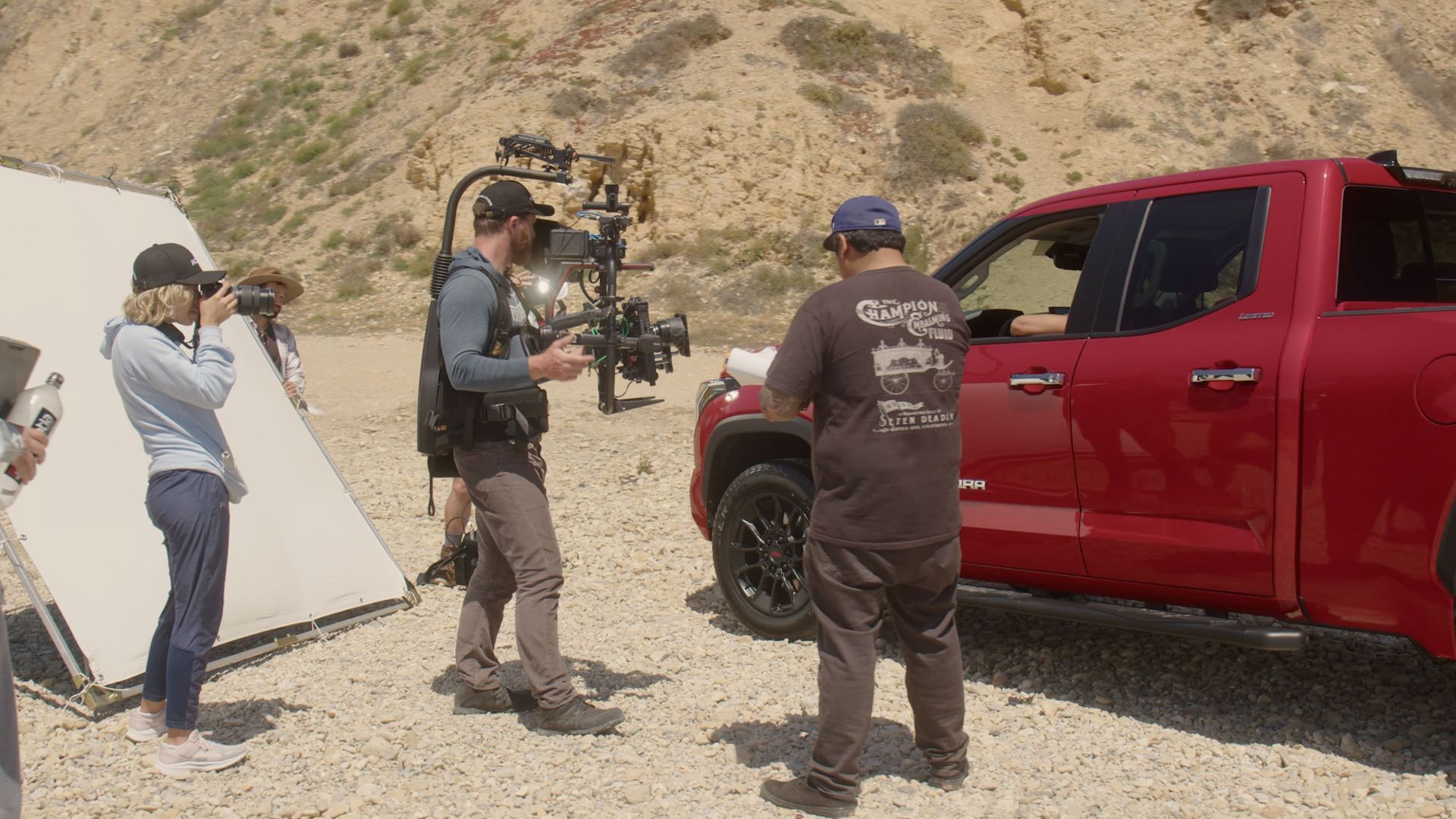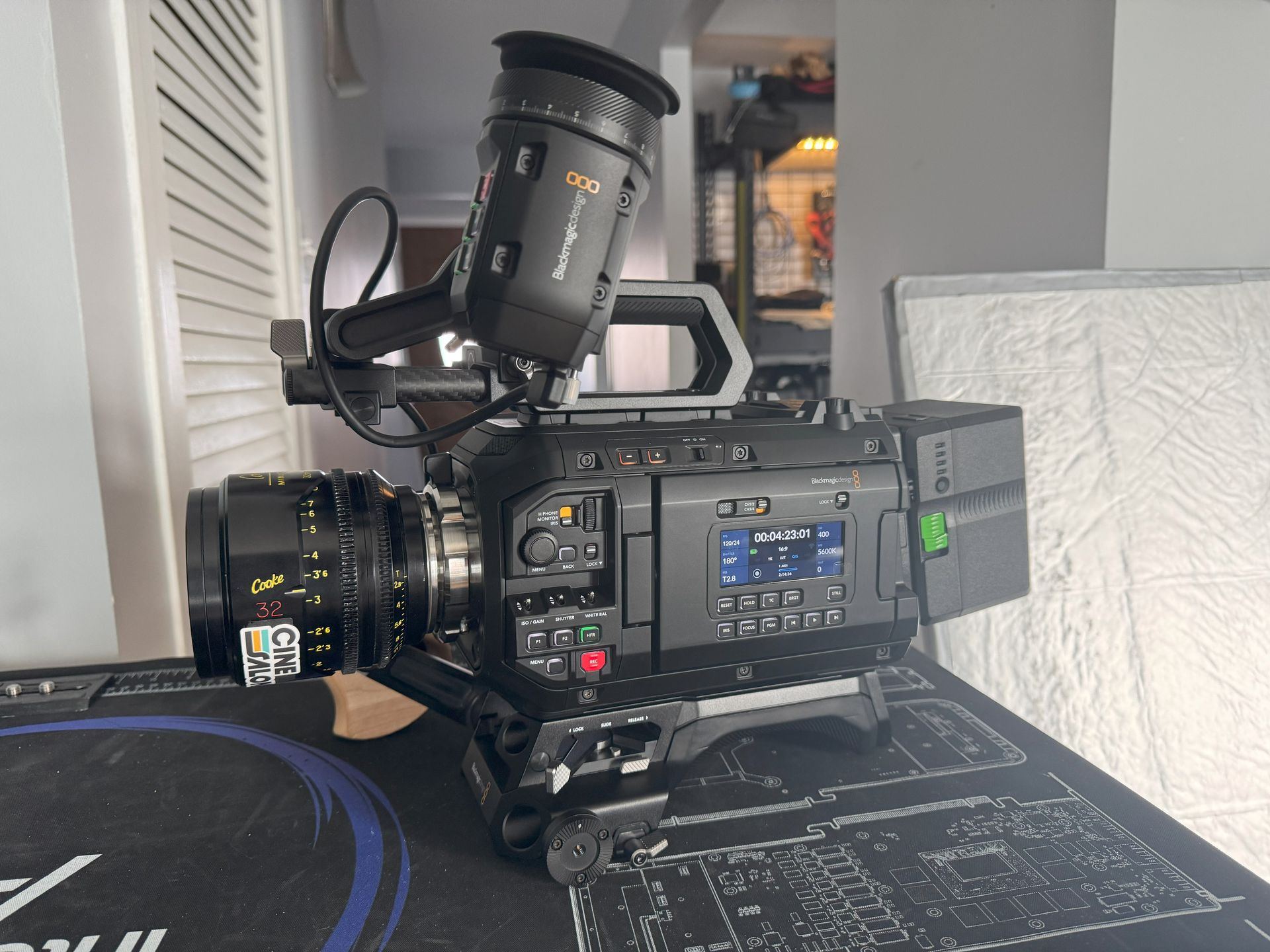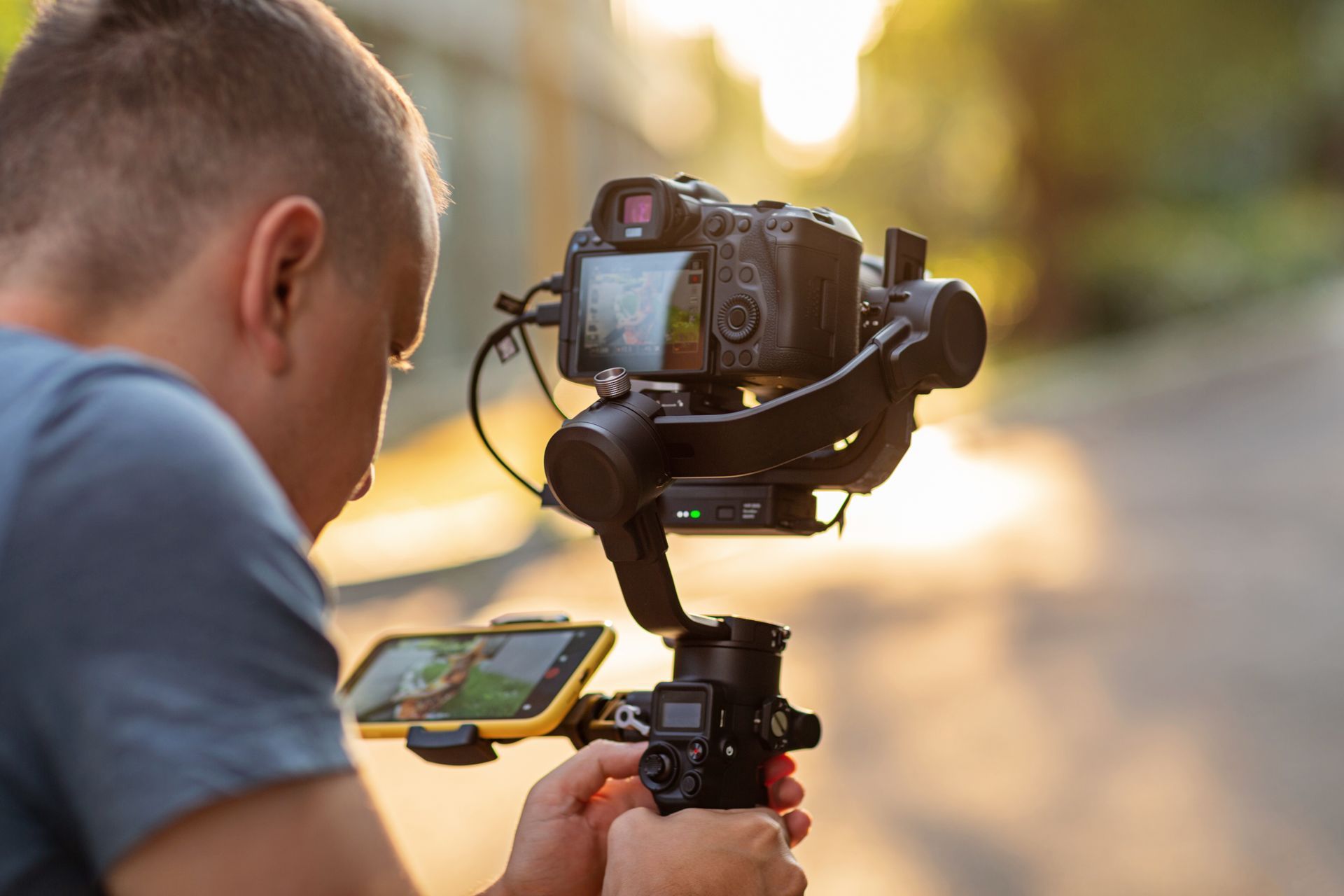How to Master the Right Tone of Voice in Your Videos
The magic touch in a video lies within its tone, a clandestine ingredient capable of elevating a mundane video to a captivating and enthralling tale. It goes beyond mere verbal expressions, delving into the nuances of delivery. In this blog post, we delve into the significance of a video's tone, deciphering its essence and unraveling why it is a pivotal factor that can either enhance or diminish the impact of your video content.
What is the tone of voice in a video?
In a video, the tone of voice is the very soul of communication. Think of it as your video's mood and attitude, going beyond mere words. It encompasses several key elements:
Choice of Words
The words you select play a vital role in setting the tone. Are you using formal, technical jargon or conversational, friendly language? Each word contributes to the overall impression your video leaves on the audience.
Sentence Structure
The way you structure your sentences can convey authority, excitement, or empathy. Short, concise sentences can create a sense of urgency, while longer, flowing sentences might evoke contemplation.
Visual Style
The visual aesthetics of your video, including colors, fonts, and graphics, also contribute to the tone. A bright, vibrant palette with playful fonts suggests a cheerful and upbeat mood, while muted colors and elegant fonts may signify a more severe manner.
Nonverbal Cues
Body language, facial expressions, and vocal intonation are potent tools for conveying tone in a video. A warm smile and friendly gestures can instantly make your audience feel at ease, while a stern expression can create tension or authority.
Understanding the Tone of Voice
I. Defining tone of voice in videos
The tone of voice is a crucial aspect of video communication that goes beyond the words being spoken. It encompasses the subtleties of delivery, comprising pitch, intonation, pace, rhythm, and emotion. The speaker's attitude, personality, and intentions are conveyed through the tone of voice, molding the viewer's interpretation of the message.
II. The role of tone in conveying emotion and intention
Significantly, the tone of voice is instrumental in communicating emotions and intentions, imbuing spoken words with depth and context. It establishes a connection with the audience, eliciting particular emotions and steering the viewer's understanding of the message. For example, a lively and enthusiastic tone can communicate excitement and positivity, while a composed and reassuring manner fosters trust and confidence.
III. Examples of different tones and their impact
Informative
A neutral, objective tone is suitable for educational or instructional videos that provide clear and accurate information.
Enthusiastic
An upbeat, energetic tone can engage viewers and create a sense of excitement, particularly in promotional or inspirational videos.
Humorous
A lighthearted, playful tone can be effective in comedic videos or segments to entertain and connect with the audience.
Persuasive
A confident, assertive tone can be used in marketing or sales videos to convince viewers to take action or adopt a particular viewpoint.
Empathetic
A compassionate, understanding tone can be appropriate in videos addressing sensitive topics or offering support and guidance.
IV. Identifying Your Target Audience
The significance of knowing your audience
Understanding your target audience is essential for selecting your videos' appropriate tone of voice. Consider their age, gender, interests, cultural background, and level of expertise related to the video's topic.
How audience demographics affect tone
Audience demographics can influence the tone of voice you choose. Consider, for instance, that a younger audience may find resonance in a casual, conversational style, whereas an older audience might gravitate towards a more formal and respectful approach.
Conducting audience research and persona creation
Conducting audience research through surveys, focus groups, or social media analysis can provide valuable insights into their preferences and expectations. Creating audience personas representing typical audience members can help you tailor your tone of voice to specific segments of your target audience.
Why is it essential to describe tone of voice in a video?
Clarity and Consistency
When filmmakers are specific about the tone they want to convey, it helps maintain a consistent message throughout the video. This clarity ensures that the audience doesn't misinterpret the intended mood and keeps the narrative on track.
Emotional Connection
The tone of voice holds the key to forging an emotional bond with the audience. Whether the aim is to elicit laughter, tears, or inspiration, the technique establishes the framework for the audience's emotional expedition.
Audience Engagement
Understanding your audience and choosing the right tone can significantly boost engagement. It's about speaking their language, addressing their needs, and making them feel understood.
Message Effectiveness
The tone can make or break the effectiveness of your message. The same information presented with different styles can lead to entirely different audience reactions. It's the difference between conveying information and creating a memorable experience.
How to Identify the Right Tone of Voice for a Video
Identifying the right tone of voice for a video involves carefully assessing various factors to ensure your message resonates with your audience and aligns with your objectives. Here are key considerations:
1. The Choice of Words
The words used in your script or dialogue
are the building blocks of your video's tone. Consider:
Formality
Are you using formal, technical language, or is your vocabulary more casual and conversational? Legal language can create a severe or authoritative tone, while informal language can make the video feel approachable and friendly.
Complexity
Is your script filled with intricate terminology and lengthy sentences, or do you keep it simple? Complex language can convey expertise, while simplicity can make your video more accessible to a broader audience.
2. The Structure of Sentences
The way you structure your sentences can significantly influence the tone:
Conciseness
Short and direct sentences can create a sense of urgency, excitement, or clarity. They're excellent for keeping viewers engaged and conveying important information succinctly.
Elaboration
Longer, more elaborate sentences can make your video feel contemplative, insightful, or poetic. They can be perfect for conveying more profound concepts and emotions.
3. The Overall Style of the Video
The visual and auditory elements in your video also contribute to its tone:
Visual Aesthetics
The choice of colors, fonts, graphics, and visual effects sets the mood. Bright colors and playful fonts suggest a lighthearted and cheerful tone, while muted colors and elegant fonts signal a more serious or professional manner.
Background Music
The soundtrack you choose can significantly impact the tone. An upbeat melody can make your video feel energetic and lively, while a soft, soothing tune can convey a calm and reflective manner.
4. The Use of Nonverbal Cues:
Facial Expressions
Expressions such as smiles, frowns, raised eyebrows, and other non-verbal cues convey emotions and attitudes. A warm smile can make your video feel welcoming, while a severe word can signal authority.
Body Language
Gestures, posture, and movements can communicate enthusiasm, confidence, or relaxation. Animated gestures can make your video lively, while composed body language can evoke professionalism.
5. Vocal Intonation
How spoken words, including pitch, speed, and emphasis, can reflect the intended tone. A lively and upbeat vocal delivery can create enthusiasm, while a measured and controlled voice can exude confidence and composure.
Different Types of Tones of Voice in a Video
Videos are versatile, and your chosen tone can significantly impact how your message is received. Here are some of the most common types of tone of voice in videos:
Formal
A formal tone is expected in educational, corporate, and news videos. It features complex sentence structures and sophisticated vocabulary. A traditional style conveys authority, professionalism, and seriousness. It's ideal for instructional content, business presentations, and news reporting.
Informal
Informal tone is often seen in vlogs, personal videos, and entertainment content. It embraces simple sentence structures and everyday language. Choose a conversational tone when you want to connect with your audience personally. It's perfect for sharing anecdotes, vlogging, and creating a relatable atmosphere.
Friendly
A friendly tone creates a warm and inviting atmosphere. It uses personal pronouns and positive language. Employ this exceptional technique to establish a connection with your audience, creating a welcoming atmosphere. This method works wonders for product demonstrations, customer testimonials, and any content where building rapport is paramount.
Authoritative
An authoritative tone is used to convey knowledge and expertise. The use of strong verbs and assertive language characterizes it. Employ a classic tone when establishing yourself as an expert in your field. It suits tutorial videos, industry insights, and thought leadership content.
Humorous
A humorous tone is all about making your audience laugh. It includes jokes, puns, and other comedic devices. Infuse humor into your content to entertain and engage your viewers. It's perfect for comedy skits, parodies, and any content that aims to bring a smile to people's faces.
Tips for Using Tone of Voice Effectively in a Video
In the previous section, we discussed several strategies for setting the tone in your videos. Let's continue with more tips for using the technique effectively:
Use Nonverbal Cues to Your Advantage
Nonverbal cues are a secret weapon for reinforcing the tone of voice in your video. They add depth and authenticity to your message.
Facial Expressions
Your facial expressions should align with the chosen tone. If you aim for a friendly tone, maintain a warm smile and eye contact with the camera. For an authoritative tone, maintain a composed and confident expression.
Body Language
Your gestures, posture, and movements should sync with the tone. Open and approachable body language can enhance a friendly style, while an authoritative tone benefits from solid and assertive gestures.
Vocal Intonation
Your voice should mirror the desired tone. If it's a friendly tone, speak with warmth and enthusiasm. Use a firm and controlled voice with direct eye contact in an authoritative manner.
Sound Effects
Carefully chosen sound effects can enhance the viewer's experience. If you aim for suspense, use creaking footsteps or a heartbeat sound to create tension. For a lighthearted tone, incorporate upbeat sound effects like laughter or applause.
Background Music
The right music sets the mood. Select a piece that complements your tone. A suspenseful style benefits from eerie music, while a lighthearted tone can be enhanced with cheerful, melodic tunes.
Be Consistent
Consistency is vital when it comes to tone. Once you've chosen a style for your video, stick with it throughout. Sudden shifts in tone can confuse your audience and dilute the impact of your message.
Be Appropriate
Always consider your audience and the context of your video when selecting a tone:
Educational Content- A formal or authoritative tone is usually appropriate for severe or educational videos.
Entertainment Content- A friendly or humorous tone can engage your viewers effectively in more lighthearted or entertaining videos.
Be Expressive
Don't be afraid to let your personality and emotions shine through your tone of voice. Your authenticity and enthusiasm can make your video more engaging and relatable.
The Importance of Consistency in Tone of Voice in a Video
Consistency in tone of voice is like the glue that holds your video content together. It serves several vital purposes:
Creating a Unified Image
Consistency in tone ensures that your video projects a unified and professional image. It's like a signature style associated with your brand or content. As you recognize a friend's voice on the phone, your audience should recognize your tone in your videos.
Building Trust
Consistency breeds trust. When your audience encounters your content and sees that your tone remains the same, they know what to expect. This reliability builds trust, as viewers can rely on you for accurate and reliable information. They feel comfortable knowing your content will consistently deliver the value they seek.
Enhancing Brand Identity
Maintaining a consistent tone of voice is crucial for brand identity for businesses and brands. It's how you communicate your values, personality, and mission. A consistent manner helps create a lasting brand image in the minds of your customers.
Reducing Confusion
A sudden shift in tone can leave your audience needing clarification. It's like changing the genre of a movie midway – the viewers may lose interest or become disoriented. Consistency ensures that your message remains clear and your audience stays engaged.
Fostering Engagement
Consistency isn't synonymous with monotony; it involves cultivating a connection with your audience. Viewers anticipating a sure feeling in your content are more inclined to engage with it actively. Whether educational, entertaining, or informative, maintaining a consistent tone keeps your audience returning for more.
Conclusion
Consistency in tone of voice in video content is the key to establishing a strong and trustworthy presence in the digital world. It creates a unified image, builds trust, enhances brand identity, reduces confusion, and fosters engagement. Filmmakers, content creators, and brands can all benefit from this critical aspect of video production.

Get total clarity on your video marketing and paid media with our FREE comprehensive data audit.
CINESALON NEWS
POPULAR POSTS
Like what you read?
Interested in having video do more for you? Give us a shout on the form or book a call.
We make your complex ideas simple to everyone else.
Do video marketing
better.
Hire the experts at CineSalon.
Quick Nav
Company
Locations
Case Studies
Services
All Rights Reserved | CineSalon







